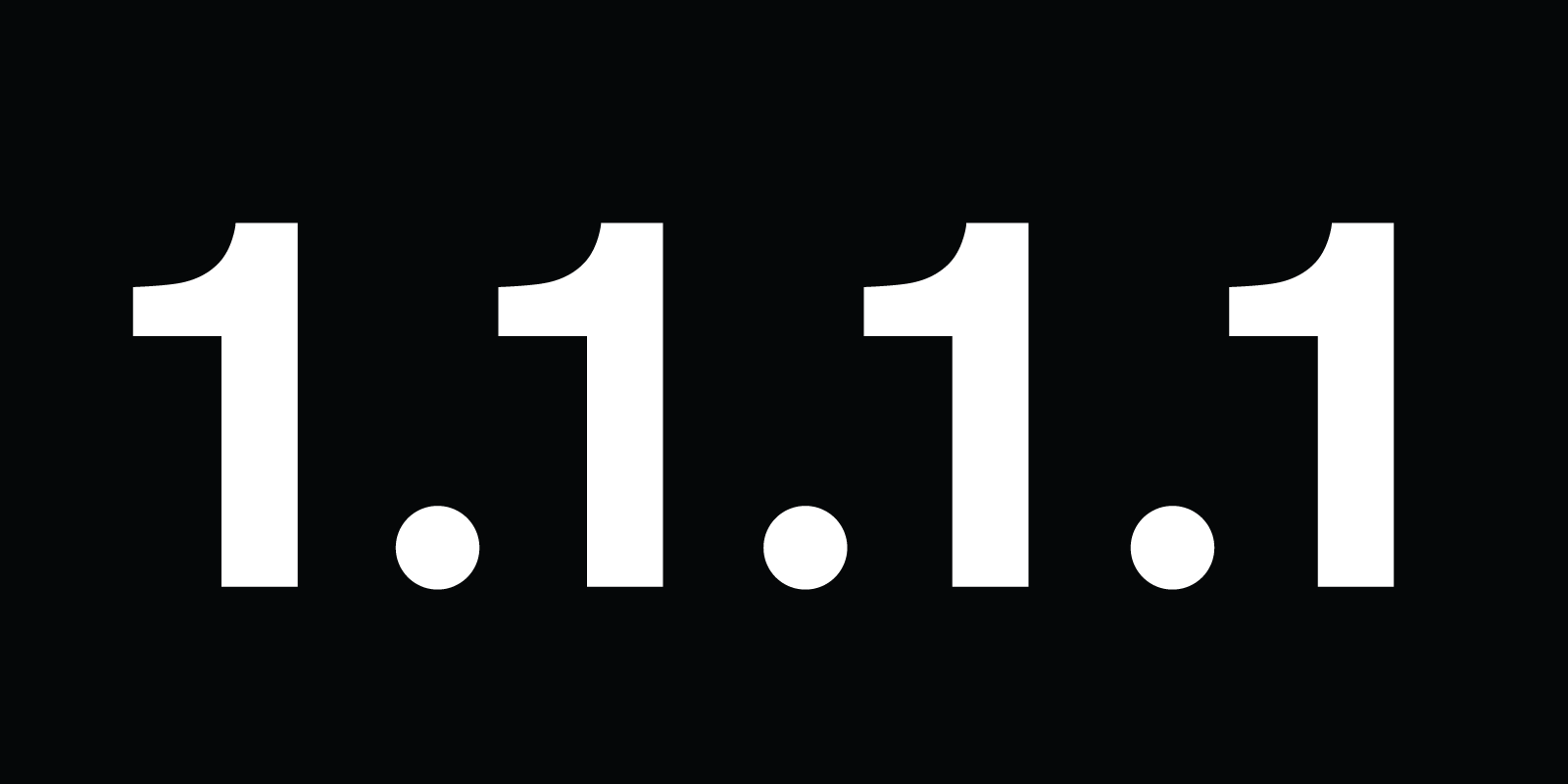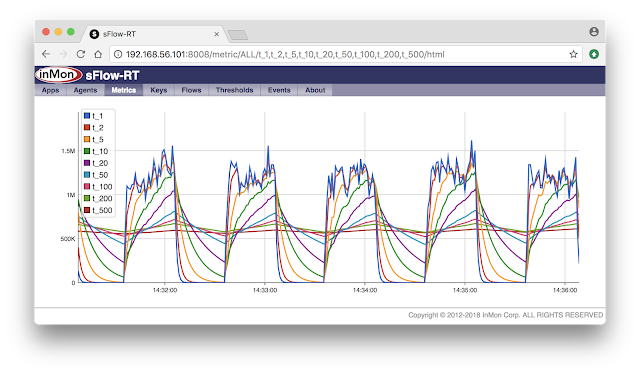Extreme Offers 60-Day Rolling Financing on Networking Products
 Short-term subscription financing has been available for networking software, but it’s more rare for networking hardware.
Short-term subscription financing has been available for networking software, but it’s more rare for networking hardware.
Multi-Cloud Orchestrator Morpheus Data Adds Alibaba Cloud, Cisco SDN Support
 The platform integrates with public and private cloud providers, and allows DevOps teams to deploy applications in minutes.
The platform integrates with public and private cloud providers, and allows DevOps teams to deploy applications in minutes.
Get Smarter About Container Monitoring
 CA Technologies says containers are “no-brainers” because they improve flexibility and increase developer productivity.
CA Technologies says containers are “no-brainers” because they improve flexibility and increase developer productivity.
Deconfusing the Static Route
Configuring a static route is just like installing an entry directly in the routing table (or the RIB).
I have been told this many times in my work as a network engineer by operations people, coders, designers, and many other folks. The problem is that it is, in some routing table implementations, too true. To understand, it is best to take a short tour through how a typical RIB interacts with a routing protocol. Assume BGP, or IS-IS, learns about a new route that needs to be installed in the RIB:
- The RIB into which the route needs to be installed is somehow determined. This might be through some sort of special tagging, or perhaps each routing process has a separate RIB into which it is installing routes, etc.. In any case, the routing process must determine which RIB the route should be installed in.
- Look the next hop up in the RIB, to determine if it is reachable. A route cannot be installed if there is no next hop through which to forward the traffic towards the described destination.
- Call the RIB interface to install the route.
The last step results in one of two possible reactions. The first Continue reading
Digital Empowerment of Women in South Asia
The Internet Society Pakistan Islamabad Chapter (PK IBD) organised a webinar on “Digital Empowerment of Women in South Asia” on 15 March, 2018. ISOC Chapter leaders, members, and staff participated in the webinar where the regional and global women-centric initiatives were shared by the speakers.
The undersigned welcomed the audience on behalf of the Internet Society Pakistan Islamabad Chapter followed by a round of introductions. Joyce Dogniez, the Internet Society’s Senior Director, Global Community Engagement, shared the importance and relevance of the UN-EQUALS partnership which is a unique collaboration between state and non-state actors to bridge the digital gender divide. Joyce shared that the Internet Society is an important part of this partnership that primarily emphasizes improving ICT access, imparting digital skills, and promoting leadership of women. Internet and digital literacy leads to economic empowerment of women that can have a profound community impact.
The next session featured updates from the Chapter Leaders of South Asia on the various initiatives being undertaken on the country and Chapter level. Sagarika Wickramasekera from the ISOC Sri Lanka Chapter informed about the initiatives of the Chapter including WomenIGF, IT trainings for girls at school level, Internet learning programmes for women entrepreneurship, etc. Sidra Jalil from Continue reading
Martello and Elfiq Networks Prove SD-WAN Via CENGN Project
 After completing its merger with Elfiq Networks, Martello launched an SD-WAN and is putting its scalability to the test with Canada’s Center of Excellence in Next-Generation Networks.
After completing its merger with Elfiq Networks, Martello launched an SD-WAN and is putting its scalability to the test with Canada’s Center of Excellence in Next-Generation Networks.
4 Enterprise Container Deployment Mistakes to Avoid
 Containers can help enterprises maximize their cloud infrastructure if deployed correctly or cause headaches if treated like more traditional VM infrastructure.
Containers can help enterprises maximize their cloud infrastructure if deployed correctly or cause headaches if treated like more traditional VM infrastructure.
Lockin In Enterprise IT – Video
 We all know that ‘lock in’ is inevitable. You make a choice and then you live with the consequences of what you have bought. However, I see a number of area where vendors are actively promoting lockin to capture unearned profits and control their partners. These dark patterns are not always obvious and I wanted […]
We all know that ‘lock in’ is inevitable. You make a choice and then you live with the consequences of what you have bought. However, I see a number of area where vendors are actively promoting lockin to capture unearned profits and control their partners. These dark patterns are not always obvious and I wanted […]Network Break 178: Cisco Disaggregates, ATT Bets Big On Whitebox
Take a Network Break! Cisco announced that it would allow third-party OSs to run on Nexus 9200 and 9300 switches, and let customers run NX-OS on other hardware. The company is also making its IOS-XR router OS available for “curated” third-party hardware.
AT&T announces a plan to deploy 60,000 whitebox routers as part of its 5G rollout, and its dNOS open network OS moves to the Linux Foundation. Juniper’s OpenContrail also joins the Linux Foundation and gets renamed Tungsten Fabric.
The P4 network programming language becomes an official project of the Open Networking Foundation, HPE buys Cape Networks for WLAN performance monitoring, Microsoft reorganizes the company, and Arista announces new 25 and 100GbE switches.
Get links with more details to all these stories after our sponsor message.
Sponsor: Couchdrop
Send files to the cloud quickly and easily with Couchdrop, a cloud-based service that uses the Secure Copy Protocol to transfer files. Couchdrop integrates with Dropbox, GoogleDrive, Amazon S3 buckets and more. Head to Couchdrop.io to get details, and get two months free with a one-year subscription.
Show Links:
An Architectural Approach to Flexible Consumption for Service Providers with IOS XR – Cisco
Enabling IOS-XR on Third-Party Network Hardware Continue reading
Flow smoothing
The sFlow-RT real-time analytics engine includes statistical smoothing. The chart above illustrates the effect of different levels of smoothing when analyzing real-time sFlow telemetry.The traffic generator in this example creates an alternating pattern: 1.25Mbytes/second for 30 seconds followed by a pause of 30 seconds. Smoothing time constants between 1 second and 500 seconds have been applied to generate the family of charts. The blue line is the result of 1 second smoothing and closely tracks the traffic pattern. At the other extreme, the dark red line is the result of 500 second smoothing, showing a constant 625Kbytes/second (the average of the waveform).
There is a tradeoff between responsiveness and variability (noise) when selecting the level of smoothing. Selecting a suitable smoothing level depends on the flow analytics application.
Low smoothing values are appropriate when fast response is required, for example:
- DDoS detection
- Leaf and spine traffic engineering using segment routing and SDN
- Internet router using merchant silicon
- Real-time traffic visualization using Netflix Vizceral
- Real-time web analytics
- Real-time visibility and control of campus networks
Generating the chart
The results described in this article are easily reproduced using the testbed Continue reading
Deadline TODAY (23:59 UTC) to submit comments to ICANN on 2018 DNSSEC Root KSK Rollover Plan
Do you believe ICANN should go ahead with the plan to roll the Root Key Signing Key (KSK) on 11 October 2018? If so (or if not), the deadline for public comment is TODAY, 2 April 2018, at 23:59 UTC. That’s about 9.5 hours from the time I’m publishing this post.
My colleague Kevin Meynell provided more info about this public comment process when it began in March. At the IETF 101 meeting in London, I spoke with ICANN staff who again stated that they would like to hear from many voices about whether they should go ahead with the Root KSK Rollover on 11 October 2018. It’s very simple to send in comments:
You can see the current list of comments at: https://mm.icann.org/pipermail/comments-ksk-rollover-restart-01feb18/2018q1/thread.html (All comments are public.)
I would encourage anyone interested to submit comments (even if they are simply “I support the plan.”).
And if you have want more information about how to get started with using DNSSEC, please see our Deploy360 Start page to begin.
Image credit: Bryce Barker on Unsplash
The post Deadline TODAY (23:59 UTC) to submit comments to ICANN Continue reading
Considering The Future Of Juniper’s Contrail And OpenContrail/Tungsten
I'm positive on Juniper Contrail, but there are many things to think about regarding the company's SDN strategy and the changing market.
The Week in Internet News: IT Pros Know IoT Security Needs Work, But They Aren’t There Yet
What IoT security problem? Most IT professionals realize the Internet of things poses some security risks, but less than a third of them actively monitor for third-party IoT security problems, according to a survey detailed at ZDNet. More than a third of those surveyed said that nobody in their organization is responsible for reviewing the risk-management policies of their IoT vendors.
Some security risks, only faster: Meanwhile, the European Union Agency for Network and Information Security is warning organizations that 5G mobile service may bring the same security risks as earlier mobile standards have. Known flaws in SS7 and Diameter, the signaling protocols used in 2G, 3G, and 4G, could end up in 5G, and allow traffic to be eavesdropped or spoofed, reports ARN.
Community broadband for net neutrality: The American Civil Liberties Union is urging U.S. cities to build their own broadband networks as a way to protect net neutrality principles, now that the Federal Communications Commission has repealed its related regulations. The Hill has a story. Many small U.S. cities are already building their own, in an effort to provide faster or cheaper service than commercial providers, Governing Magazine says.
Fake news in the news: Malaysia Continue reading
IPv4 Subnetting Best Practices
For networking pros, subnetting is an essential skill. Follow these steps to ensure reliable performance and security in IPv4 networks.
IPv4 Subnetting Best Practices
For networking pros, subnetting is an essential skill. Follow these steps to ensure reliable performance and security in IPv4 networks.
Welcoming Cisco to disaggregation
Earlier this week, Cisco announced that they will be offering a disaggregated solution with their Cisco IOS XR and Nexus operating systems (1). It’s true, the same organization that claimed to have killed white-box networking is jumping on the bandwagon three years later.
Open networking is no longer just the future
It’s now a requirement in today’s innovative data centers. Cumulus was founded on the notion that the future of data center networking is disaggregation, that the industry should be open and that innovation will only prevail when open networking does. The fact that one more incumbent vendor has acknowledged this notion about where the industry is headed only validates our vision. The future of networking truly is here, and we welcome Cisco to the club — really!
In the last few years, and even last several months, we’ve seen open networking takeoff. From the moment we helped bring ONIE to the market back in 2013, we knew things were going to change in the industry. Since then, we’ve seen the list of participating hardware vendors grow like crazy and our customer base grow with them. We’ve seen web-scale companies like Facebook, Google, LinkedIn and more contribute to the Continue reading
Announcing 1.1.1.1: the fastest, privacy-first consumer DNS service

Cloudflare's mission is to help build a better Internet. We're excited today to take another step toward that mission with the launch of 1.1.1.1 — the Internet's fastest, privacy-first consumer DNS service. This post will talk a little about what that is and a lot about why we decided to do it. (If you're interested in the technical details on how we built the service, check out Ólafur Guðmundsson's accompanying post.)
Quick Primer On DNS
DNS is the directory of the Internet. Whenever you click on a link, send an email, open a mobile app, often one of the first things that has to happen is your device needs to look up the address of a domain. There are two sides of the DNS network: Authoritative (the content side) and Resolver (the consumer side).
Every domain needs to have an Authoritative DNS provider. Cloudflare, since our launch in September 2010, has run an extremely fast and widely-used Authoritative DNS service. 1.1.1.1 doesn't (directly) change anything about Cloudflare's Authoritative DNS service.
On the other side of the DNS system are resolvers. Every device that connects to the Internet needs a DNS resolver. By default, Continue reading
Introducing DNS Resolver, 1.1.1.1 (not a joke)

Cloudflare’s mission is to help build a better Internet and today we are releasing our DNS resolver, 1.1.1.1 - a recursive DNS service. With this offering, we’re fixing the foundation of the Internet by building a faster, more secure and privacy-centric public DNS resolver. The DNS resolver, 1.1.1.1, is available publicly for everyone to use - it is the first consumer-focused service Cloudflare has ever released.
We’re using the following IPv4 addresses for our resolver: 1.1.1.1 and 1.0.0.1. Easy to remember. These addresses have been provided to Cloudflare by APNIC for both joint research and this service. You can read more about their work via the APNIC blog.
DNS resolver, 1.1.1.1, is served by Cloudflare’s Global Anycast Network.
Background: A quick refresher on the role of the resolver in DNS
Our friends at DNSimple have made this amazing DNS Tutorial for anyone to fill in their gaps on how DNS works. They explain all about resolvers, root name servers, and much more in a very informative way.

When resolving a domain name, a query travels from your end system (i.e. a web browser) to Continue reading

